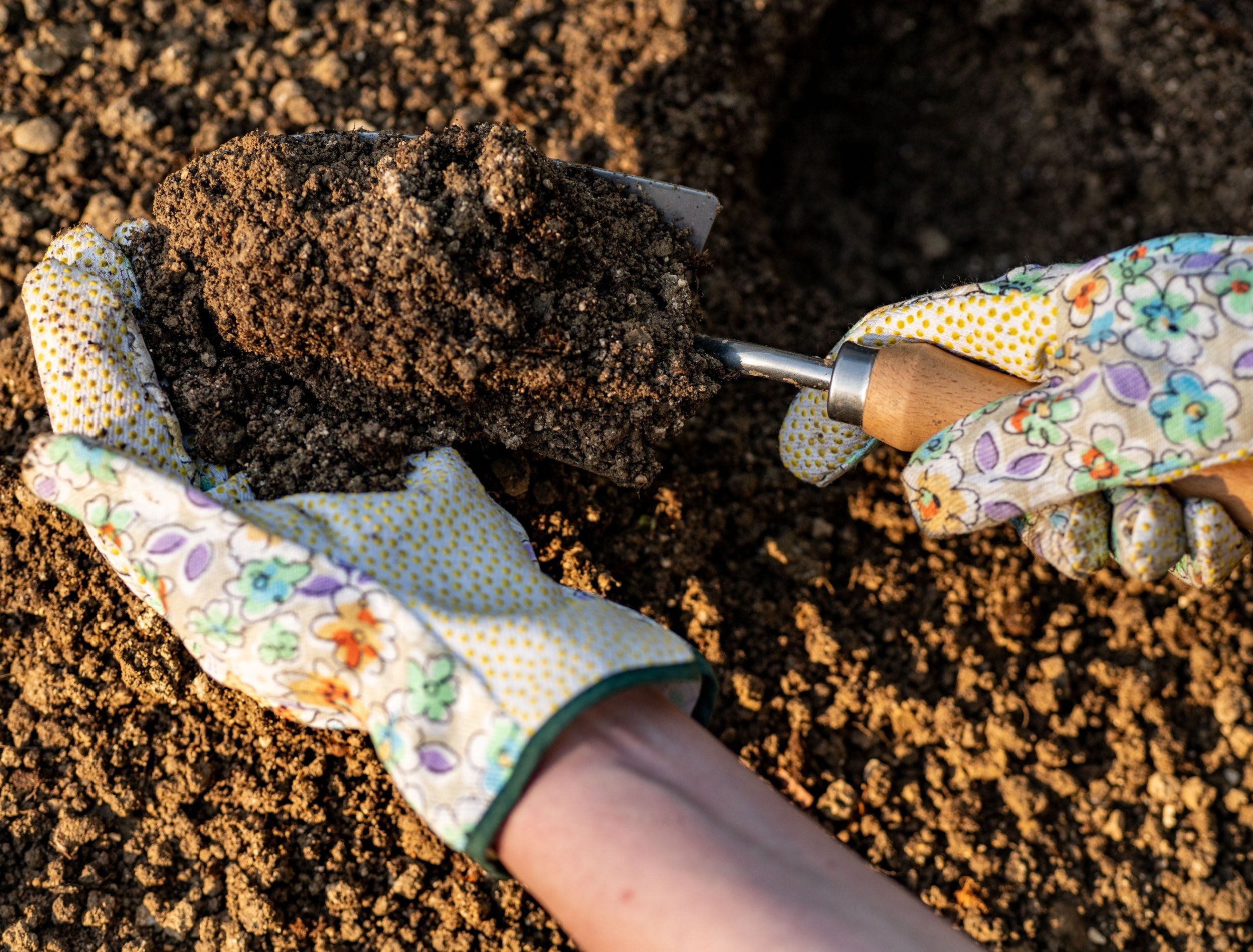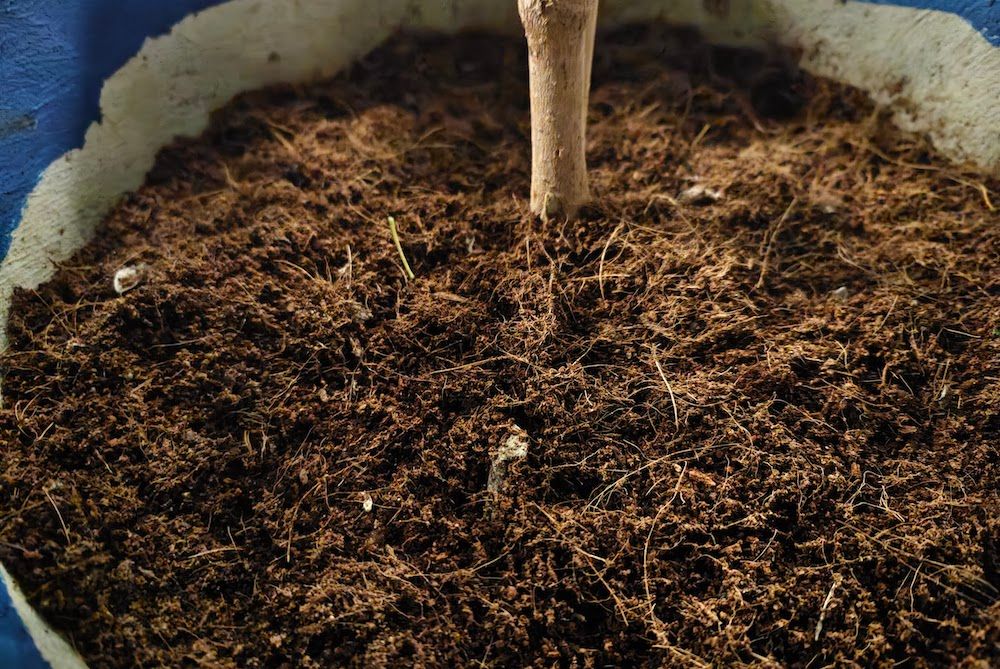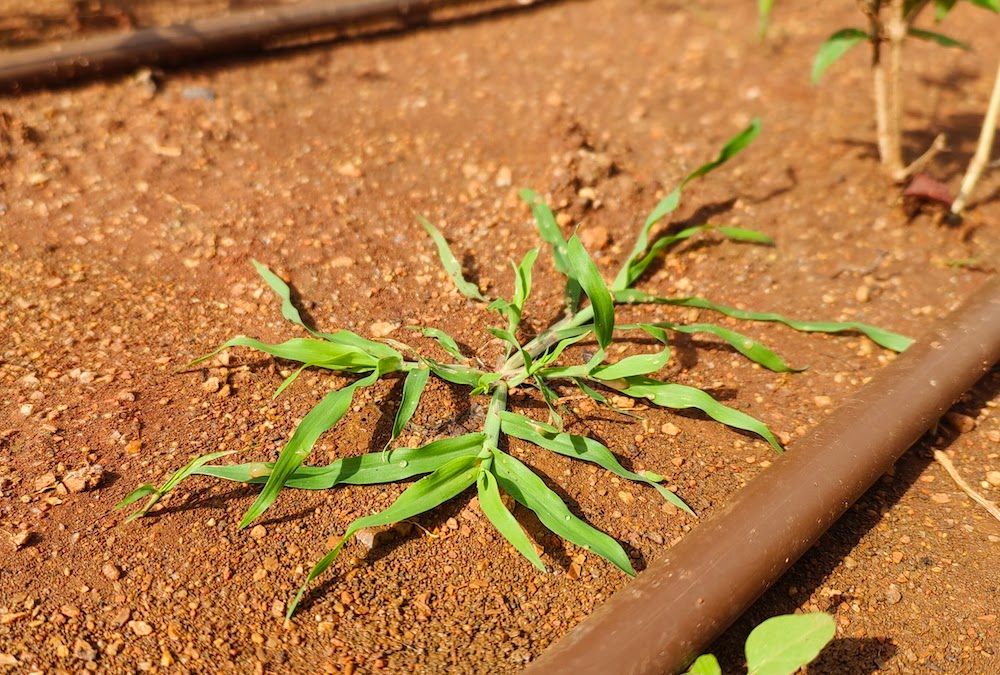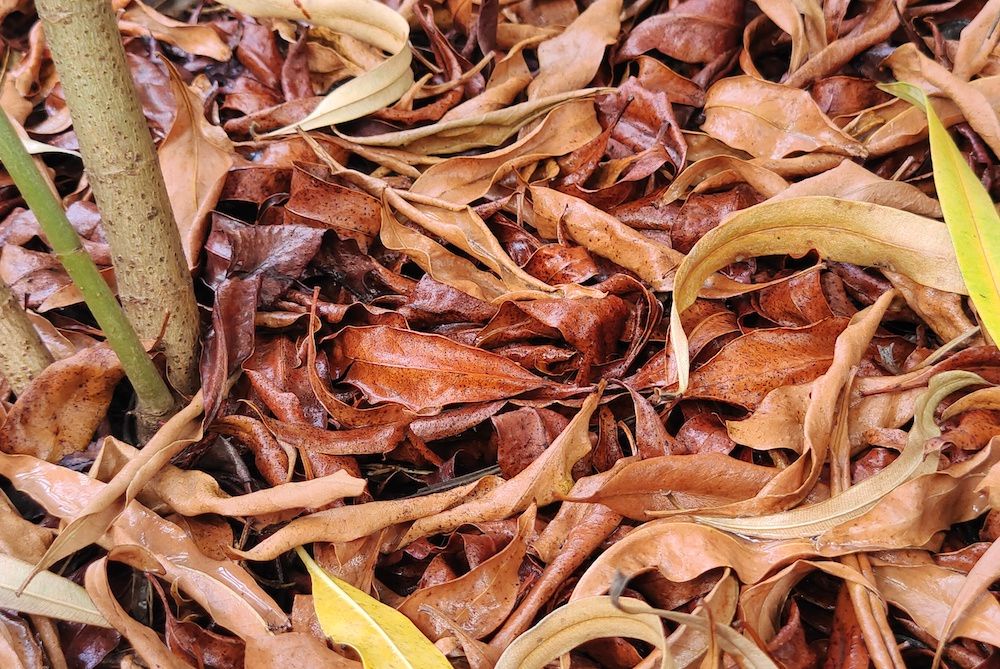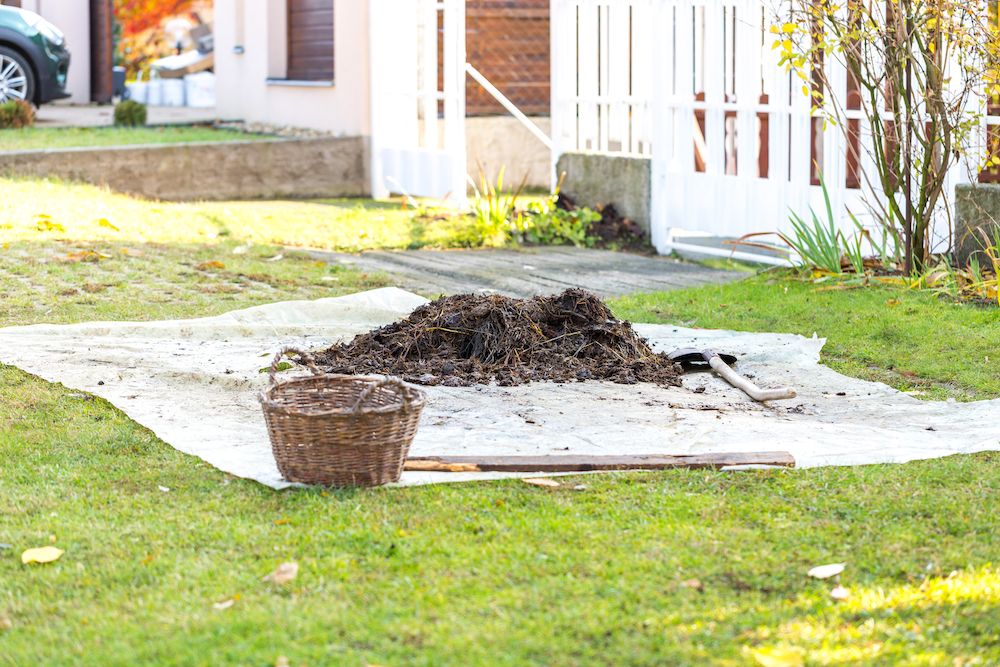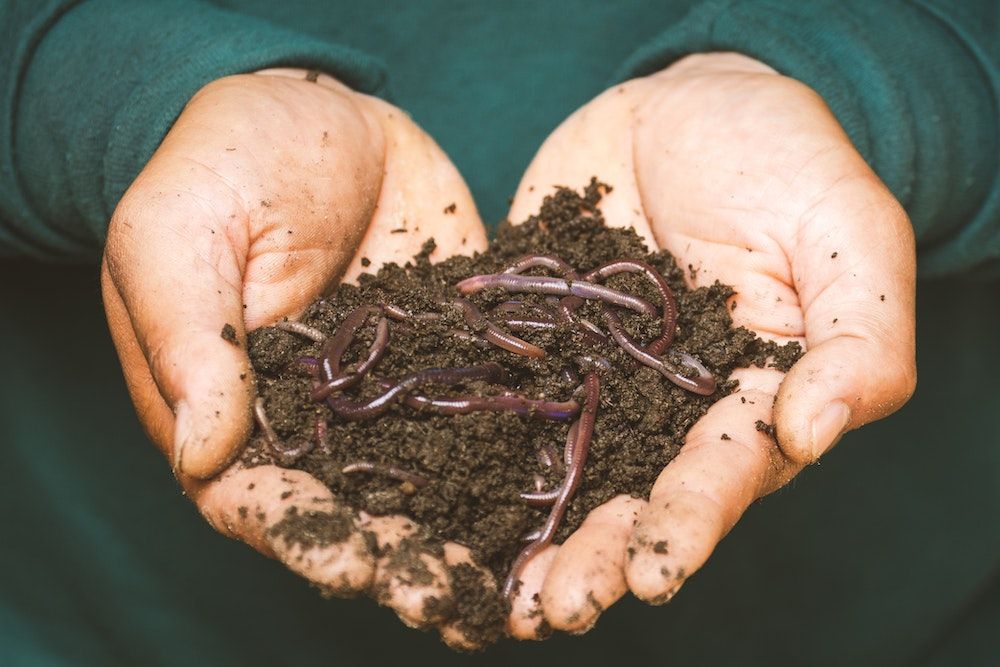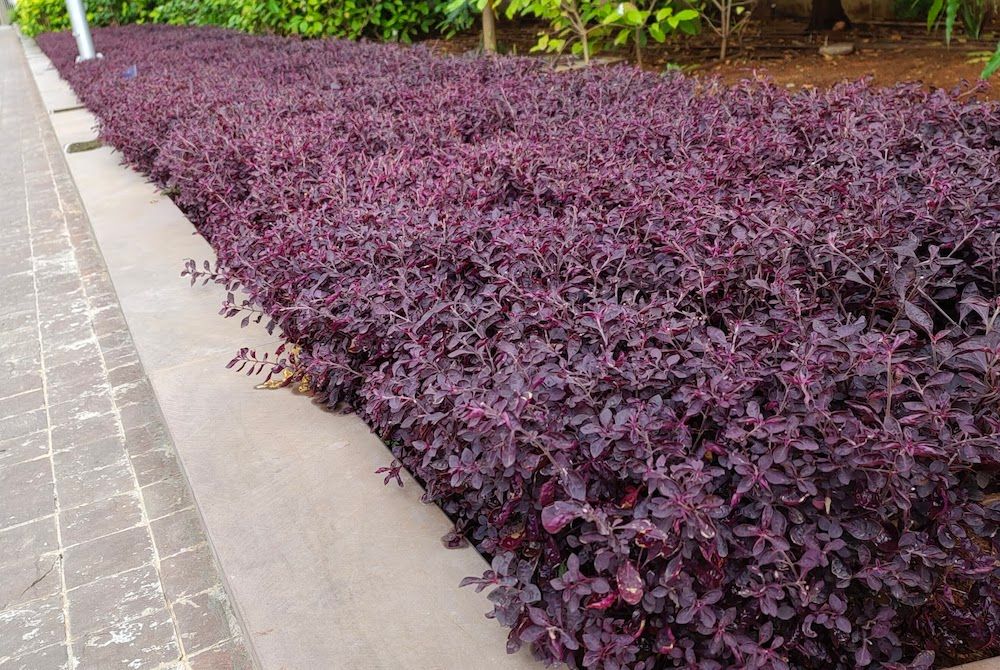For most plants, the ideal soil is moist, well-draining, and rich in nutrients. However, even the best garden soil can deteriorate over time as plants that grow in them deplete its nutrient content, leaving very little for future plants.
For a healthy garden and a bountiful harvest, it's important to regularly refresh your garden soil by adding amendments and organic matter. So what can you do to refresh the soil in your gardens, and are there any steps to take before you begin? More dirt below!
How to Refresh Garden Soil
Below are some of the best methods for improving and refreshing your soil after a growing season.
1. Test Your Soil and pH
Image Credit: Lakeisha Ethans for Backyard Boss
Healthy soil is essential to help plants thrive, which is the primary reason for a soil test. A soil test will provide an overview of your soil's quality, including its nutrient, organic matter, minerals levels, and earthworm count.
You can use a soil test kit that you can purchase online, household items for DIY soil tests, or get professional help. However, if you choose to send a soil sample to your local lab, it may take anywhere between a week and two to receive results. Speak to the expert to get a clear idea of what to expect.
Once you receive the results, you'll know what nutrients your soil's lacking, and you can then use amendments and conditioners to refresh it. Besides adding amendments and conditioners ensure your soil is not compacted.
Loose soil allows for easy root growth, proper air circulation, and prevents excess water retention. Avoiding excess water near the roots is crucial, as this can cause root rot, which is highly detrimental to plants.
When to Test
It's essential to test your soil every three to four years, even if your plants are doing well. Periodic soil testing will tell you a lot about your soil's mineral health and fertility. You can carry out a soil test in spring, but fall is the best time because your soil's fertility is at its lowest.
Also, if you're using professional help, remember to use the same lab each time to test your soil. This is because different labs may have different ways of testing the soil, leaving you with different results each time you provide them with a sample.
Keep an eye out for your soil's pH when you test it and amend it according to your specific plants growing requirements.
2. Remove Weeds From Your Garden Soil
Image Credit: Lakeisha Ethans for Backyard Boss
The first step to refreshing your garden soil is to pull out weeds and dying plants from the previous season. Discard weeds like thistle, but add dandelions, mugwort, purslane, clover, pennycress, chickweed, and lamb’s quarter to your compost pile as they benefit the soil. When removing weeds, ensure you pull everything out because even the smallest piece left behind will sprout back.
Pro Tip: Rake fallen leaves and use them as mulch in your garden beds. If using natural mulch isn't your thing, there are many ways to use leaves in your backyard.
3. Add Compost or Mulch
Image Credit: Lakeisha Ethans for Backyard Boss
Before adding amendments and nutrients to the soil, measuring its moisture level is essential to ensure it is moist -- not too wet or dry. If you're looking for an eco-friendly way to enhance soil structure and nutrient content, adding organic matter like well-rotted compost or mulch is a great option.
As organic matter decomposes, it transforms into humus, which is rich in nutrients. Besides humus, microorganisms that help decompose organic matter loosen the soil by creating pockets and tunnels that promote better air and water circulation.
Adding organic matter to clay soil is particularly beneficial since this soil type tends to compact and become waterlogged, depriving roots of vital air, water, and nutrients. Organic matter helps improves drainage and aeration.
It may seem odd, but adding organic matter to sandy soil can also be beneficial. It will bind it together, which will prevent moisture and nutrients from draining out quickly. Spread 2 to 3 inches of organic matter to your garden soil, then till it into the top 6 to 8 inches of your soil using a spade.
4. Add Aged Manure
Image credits: Tynka via Shutterstock
Aged manure (at least six months old) can also help improve your garden soil's structure and fertility. On the other hand, fresh manure will burn plants and expose you to foodborne pathogens like E-coli, listeria, and salmonella. Always use well-rotted manure when refreshing your garden soil.
You can add droppings from most animals, such as cows, rabbits, goats, sheep, and chickens. However, ensure you use manure from animals who haven't been exposed to foods treated with pesticides and herbicides, as this can transfer to your garden.
Spread 2 to 3 inches of well-rotted or composted manure to your garden soil, then till it into the top 6 to 8 inches of your soil using a spade. A commonly suggested guideline is to apply 150 pounds of cattle manure, 200 pounds of horse manure, or 50 pounds of poultry manure for every 1,000 square feet of garden soil.
5. Add Earthworms to Your Garden Soil
Image credits: Sippakorn Yamkasikorn via Pexels
Tilling the soil is a great way to increase the soil's water retention, drainage, and aeration abilities. When you till the soil, you help break it up and loosen it, which improves soil structure, especially if it's compacted.
While this is a great way to fix compacted soil, it can potentially harm the beneficial earthworm population in the soil. Instead of tilling the soil, opt for no-till gardening and let earthworms do the tilling for you by increasing their numbers.
You can do this by adding more earthworms into the soil, which is crucial in maintaining soil health. Ideally, you should find at least ten earthworms in 1 foot of soil to qualify as healthy soil.
6. Grow Cover Crops
Image credit: Lakeisha Ethans for Backyard Boss
Cover crops offer more than just a source of off-season food; they can also effectively safeguard, enhance, and revitalize your soil. Planting cover crops can prevent soil erosion, compaction, and weed growth.
Furthermore, at the end of each growing season, cover crops provide your garden with extra nutrients as they decompose when you till them under the soil. Some of the best cover crop options include kale, turnips, clover, legumes, peas, ryegrass, and radishes.
After harvesting your yield, simply till the remaining plant parts into the soil for optimal enrichment. Besides cover crops, consider crop rotation to keep your soil in optimal condition for at least three to four years.
Let's Talk Dirt!
Having nutrient-rich soil is essential to achieve a bountiful harvest at the end of a growing season. When you refresh your garden soil, you bring it back to its formal glory -- a hospitable environment for healthy plants.
You can refresh your soil through various methods, including mulching, composting, increasing the earthworm population, and incorporating well-rotted manure. However, before you do any of these, conduct a soil test to determine your soil's precise structural and nutrient needs.
Leave your experiences, thoughts, and questions in the comment section! And share with friends and family who might find this helpful.

